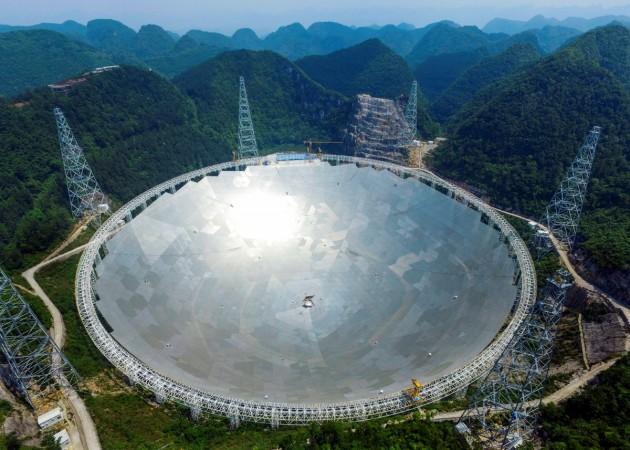
The biggest single-dish radio telescope -- Five-hundred-meter Aperture Spherical Telescope (FAST) – which is located in southwest China's Guizhou Province has detected two pulsars.
ALSO READ: NASA findings on Mars' seafloor deposits offer clues to origin of life on Earth
FAST detected the two pulsars on August 22 and 25, scientists from the National Astronomical Observatories of China (NAOC) revealed on Tuesday. The finding was also verified by Australia's Parkes radio telescope.
Pulsars are swiftly rotating neutron stars that discharge regular pulses of radio waves and other electromagnetic radiation at rates up to thousands pulses per second. Pulsars are defined as one of the densest objects present in the cosmos. They are the residues of the gravitational collapse of massive stars, loaded with about 1.4 solar masses worth of matter into a sphere, scaling just 12 miles across.

Dubbed J1859-01 and J1931-01, the two newly discovered pulsars are located at a distance of 16,000 light-years and 4,100 light-years from Earth. The rotation periods of the pulsars are 1.83 seconds and 0.59 seconds respectively, as reported by Xinhua news agency.
It was half a century ago when pulsars were first discovered by chance. So far more than 2,000 pulsars have been detected, but it's still not known what exactly they comprise of.
The Chinese government created this spherical radio telescope using 1.2 billion yuan ($180 million) which is as big as 30 football fields.
The FAST radio telescope was devised to be used by China for the Search for Extraterrestrial Intelligence (SETI) project, which aims at solving the mysteries prevailing in the universe and detect extraterrestrial civilisations, habitable planets and interstellar and other suspected signals.
The telescope had first turned operational in September 2016 and its trial period is still going on.
"It is truly encouraging to have achieved such results within just one year," said Peng Bo, deputy director of the FAST project.
"The results are promising, as a telescope of this size would normally need a trial of three to five years before it could obtain results like this," Bo added.
Astronomers will work on FAST for two more years in order to upgrade its performance, the radio telescope would then be ready for use by Chinese researchers for early stage explorations and even other astronomers across the world could use it for carrying out their research.

















